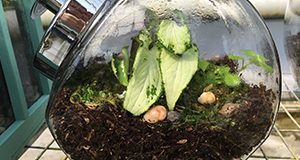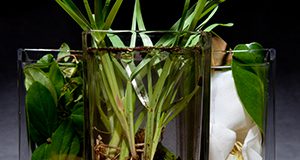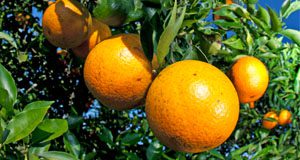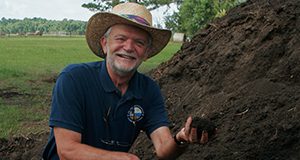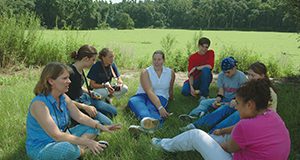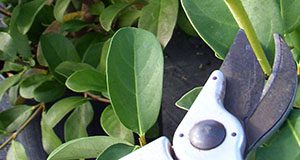A terrarium is a collection of small plants growing in a clear, usually enclosed, container. This three-page fact sheet walks you through the process of creating your own terrarium. Written by Amy Vu and Sydney Park Brown, and published by the Environmental Horticulture Department.
http://edis.ifas.ufl.edu/mg356
Author: Allison Nick
Pesticide Labeling: Protection of Pollinators
On May 29, 2015, the EPA published its Proposal to Mitigate Exposure to Bees from Acutely Toxic Pesticide Products. This seven-page fact sheet outlines the highlights from this policy and its proposed restrictions, which would prohibit applications of pesticide products that are acutely toxic to bees during bloom where honey bees are known to be present under contract for pollination services. Written by Frederick M. Fishel, James Ellis, and Gene McAvoy and published by the Agronomy Department.
edis.ifas.ufl.edu/pi271
Enhancing the Success of Extension Programs with the Social Exchange Theory
Social Exchange Theory (SET) is based on the principle that human behavior is an exchange of rewards between people. This three-page fact sheet explains how it can be applied to Extension programming to promote clientele participation in programs and a commitment to changing their behaviors. Written by Amanda D. Ali and Laura A. Warner and published by the Department of Agricultural Education and Communication.
http://edis.ifas.ufl.edu/wc280
Getting Engaged: Resources to Support Community Engagement Practices
This document is part of a series called Getting Engaged (http://edis.ifas.ufl.edu/topic_series_getting_engaged), designed to help Extension and research faculty and other community engagement professionals improve their engagement with a variety of stakeholder audiences. This four-page document offers resources for practitioners at all stages, from those just beginning to think about engagement to those who have been engaging their communities for years. Written by Kathryn A. Stofer and published by the Department of Agricultural Education and Communication.
http://edis.ifas.ufl/edu/wc273
Nitrogen to Potassium Ratios for Florida Golf Courses
Golf course nutrient management programs commonly include application of both nitrogen and potassium. These macronutrients are required by turfgrass in greater quantities than any other element except carbon, hydrogen, and oxygen. This two-page fact sheet explains the Nitrogen to Potassium ratios that are best for golf courses. Written by T.W. Shaddox and J.B. Unruh and published by the Environmental Horticulture Department.
http://edis.ifas.ufl.edu/ep540
Developing County Associations for School and Community Gardens
Increasingly, gardeners receive attention for the educational, environmental, health, and social impacts that their projects facilitate within schools and communities. Garden associations allow Extension to play a vital role in providing technical information to support new and existing gardens. This three-page fact sheet outlines the framework used by a pilot garden association program in Polk County, Florida. Written by John M. Diaz, Susan Tyler Webb, and Erin Elsberry and published by the Department of Agriculture Education and Communication.
http://edis.ifas.ufl.edu/wc279
Getting Engaged: Improving Your Stakeholder Engagement Practices
This document is part of a series called Getting Engaged (http://edis.ifas.ufl.edu/topic_series_getting_engaged), designed to help Extension and research faculty and other community engagement professionals improve their engagement with a variety of stakeholder audiences. This four-page document provides basic information that will help faculty and other community professionals become more comfortable with engaging various stakeholder audiences. Written by Kathryn A. Stofer and published by the Department of Agricultural Education and Communication.
http://edis.ifas.ufl.edu/wc274
Protein and the Older Adult

Protein is a nutrient that provides energy for our bodies and is involved in many vital functions, such as repair, maintenance, and immune function. This three-page document discusses the protein requirements for older adults. Written by Amanda L. Ford and Wendy J. Dahl and published by the Food Science and Human Nutrition Department.
http://edis.ifas.ufl.edu/fs290
Production Guidelines for Globe Artichoke in Florida
Globe artichoke (Cynara cardunculus L.) belongs to a genus of thistle-like plants in the sunflower (Asteracae) family and is cultivated for its flower buds. This four-page fact sheet discusses production guidelines for artichoke in Florida. Written by Shinsuke Agehara and published by the Horticultural Sciences Department.
http://edis.ifas.ufl.edu/hs1289
Parameters for Site-Specific Soil Phosphorus Loss Modeling from Soil Test Data
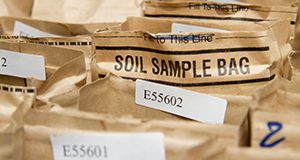
This four-page fact sheet is part of a series titled Soil Phosphorus Storage Capacity (SPSC) for Phosphorus Risk Assessment and Management. This series is intended for use by those who are interested in management practices and policies that minimize the risk of phosphorus loss from soils. Written by Biswanath Dari, Vimala D. Nair, and Willie G. Harris and published by the Department of Soil and Water Sciences.
http://edis.ifas.ufl.edu/ss656
Tissue Testing and Interpretation for Florida Turfgrasses
Tissue analysis offers a precise estimate of a plant’s nutritional status at the time of sampling. Nutrient deficiencies can be detected with tissue analysis before visual symptoms appear. This three-page fact sheet describes the importance of tissue testing and how to interpret the results. Written by T.W. Shaddox and published by the Environmental Horticulture Department.
http://edis.ifas.ufl.edu/ep539
Citrus Flavonoid Effects on Obesity
The increased prevalence of obesity in recent decades has sparked tremendous concern worldwide. A type of phytochemical, called flavanoids, has been shown in clinical trials to provide significan benefits to overall health because of their antioxidant abilities. Flavanoids are especially abundant in citrus species. This two-page fact sheets describes the health benefits of citrus flavanoids. Written by Yu Wang and Laura Reuss and published by the Food Science and Human Nutrition Department.
http://edis.ifas.ufl.edu/fs285
Water Conservation and Extension Participants: An Interesting Synergy
The home landscape is a place where there is a great opportunity for people to adopt irrigation practices and technologies that conserve water. However, a large portion of residents lack the required knowledge and skills to adopt some of those practices. This three-page fact sheet discusses using innovative evaluation approaches to demonstrate the impacts of statewide urban water conservation programs. Written by Laura A. Warner, Sebastian Galindo-Gonzalez, and Anil Kumar Chaudhary and published by the Department of Agricultural Education and Communication.
http://edis.ifas.ufl.edu/wc278
Utilization of Biosolids in Forage Production Systems in Florida
This four-page publication provides basic information about land application of biosolids to pastures and hayfields in Florida. The information contained in this document should be of interest to stakeholders, biosolids managers, students, and scientists interested in topics related to biosolids management practices and the potential benefits and risks associated with biosolid land application. Written by Maria L. Silveira, George A. O’Connor, and Joao M.B. Vendramini and published by the Department of Soil and Water Sciences.
http://edis.ifas.ufl.edu/ss658
Getting Engaged: Public Engagement Practices for Researchers
A part of the Getting Engaged series that aims to help readers become more comfortable with engaging various stakeholder audiences, this five-page fact sheet is designed for agriscience, natural resources, or other science and engineering faculty with primarily natural or physical science backgrounds who want to get started in stakeholder engagement. Written by Kathryn A. Stofer and published by the Department of Agricultural Education and Communication.
http://edis.ifas.ufl.edu/wc272
Preventing Foodborne Illness: E. coli O157:H7
This seven-page fact sheet discusses the common foodborne pathogen E. coli O157:H7, especially as it concerns food handlers, processors and retailers. Written by Keith R. Schneider, Renée Goodrich Schneider, Ploy Kurdmongkoltham, and Bruna Bertoldi and published by the Food Science and Human Nutrition Department.
http://edis.ifas.ufl.edu/fs097
Consultation Forms for Walk-In Clientele and Landscape Site Visits
This eight-page fact sheet contains forms for horticulture Extension agents and staff to use during walk-in consultations and/or on-site consultations related to plant identification, problem diagnosis, and cultural advice. The forms are available as fillable PDFs. Written by Amanda D. Ali, Laura A. Warner, Sydney Park Brown, Susan Haddock, and Laurie Albrecht and published by the Department of Agricultural Education and Communication.
http://edis.ifas.ufl.edu/wc277
Helpful Details for Commercial Propagation of Woody Plant Stem Cuttings
This three-page fact sheet provides details that are very important for successful propagation of woody plant stem cuttings, such as sanitation, quality of cuttings, the time of year/day to take cuttings, stem size diameter and length of cutting, location of cuts/terminal bud removal, and environmental conditions. Written by Thomas Yeager and published by the Environmental Horticulture Department.
http://edis.ifas.ufl.edu/ep536
Coconut Oil: A Heart Healthy Fat?
There are many claims about the health benefits of coconut oil. But what is the evidence behind these health claims? Read this five-page fact sheet to learn more about coconut oil and how it might affect heart health. Written by Wendy M. Gans and Gail P.A. Kauwell and published by the Food Science and Human Nutrition department.
http://edis.ifas.ufl.edu/fs289
The Laccate Ganoderma of the Southeastern United States: A Cosmopolitan and Important Genus of Wood Decay Fungi
Ganoderma Karst. is a large and diverse genus of wood decay fungi that can rot the roots and/or lower trunk of many tree species. There are several laccate (varnished or polished) Ganoderma species that are found in the southeastern United States and this six-page fact sheet provides an overview of the different species. Written by Andrew L. Loyd, Jason A. Smith, Brantlee S. Richter, Robert A. Blanchette, and Matthew E. Smith and published by the Plant Pathology Department.
http://edis.ifas.ufl.edu/pp333
